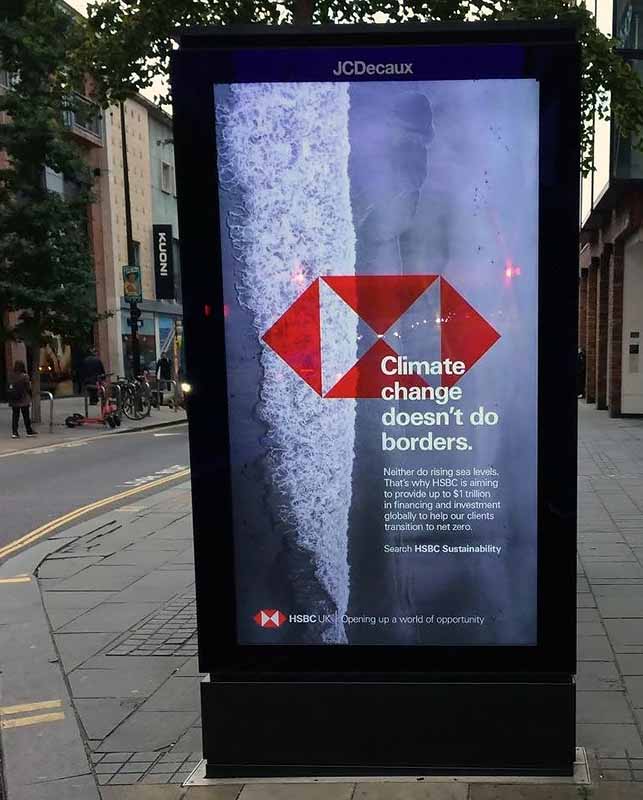Worldwide regulators are tightening up on strategic greenwashing to protect consumers, business and market integrity. As further examples arise there is more, we can learn about what regulators will tolerate and what they require of companies.
Put simply, any leeway for general feel-good statements, vague aspirations and unsubstantiated claims has vanished as the focus shifts from products and services to more fundamental strategy.
In this article, we review the major stakeholders with a stake in clamping down on greenwashing, take a look at three recent high-profile cases where adverts have been banned and examine the far-reaching implications of regulatory requirements for companies.

Who are the major players? (Stakeholders)
The regulators
In the UK
In the UK the main regulators and regulations are the:
- CMA (Competition and Markets Authority)
- ASA (Advertising Standards Authority) and associated Committee of Advertising Practice (CAP) Advertising Guidance.
The CMA
The Competition and Markets Authority (CMA) is responsible for promoting healthy market competition and preventing anti-competitive activities in the UK. The CMA is tasked with investigating mergers, conducting market studies and investigations, enforcing consumer protection legislation, and overseeing the UK internal market.
At the end of 2021, the CMA’s Green Claims Code set out a clear, comprehensive framework for organisations looking to make environmental or sustainability claims in their communications. The CMA also conducts active investigations based on complaints received and initiates wider industry investigations into specific sectors where it suspects there are risks of structural or systemic challenges. To date, it has launched investigations into the fashion and FMCG sectors to assess the accuracy of environmental claims.
The ASA
“The Advertising Standards Authority (ASA) is the UK’s independent advertising regulator. The ASA makes sure ads across UK media stick to the advertising rules (the Advertising Codes).”
The ASA administers two different codes on advertising differentiating between Broadcast Advertising (BCAP Code) and Non-broadcast Advertising which also includes Direct and Promotional Marketing (CAP Code). Both codes include rules on accuracy and truthfulness and include specific clauses relating to environmental claims and messages that ‘could be considered harmful or socially irresponsible’.
The Codes are consistent with the CMA’s guidance but have a more operational focus for advertisers. For example, ads with environmental claims must be clear and use terminology that the consumer is likely to understand. Research by the ASA suggests there is a widespread misunderstanding of terms in the general population. As a result, they place responsibility on the advertiser to ensure communications are clear.
Importantly, the Codes apply different standards to ‘absolute environmental claims’ and ‘comparative environmental claims’:
- Absolute environmental claims – includes claims such as green or environmentally friendly.
- Comparative environmental claims – include claims such as greener or friendlier.
The codes require a higher standard of evidence to back up absolute claims, the default being they are backed with robust evidence about the product’s entire life cycle.
If comparative claims are made, they should clearly state the basis of the comparison and make it clear which product or aspect of a product is being compared and what it is being compared against.
In Europe
In the EU, the European Commission takes the lead on regulation which is brought into law by member states. In 2022 the EU proposed amendments to Directive 2005/29 on Unfair Commercial Practices (UCP). This defines an environmental claim as:
“any message or representation, which is not mandatory under Union law or national law, including text, pictorial, graphic or symbolic representation, in any form, including labels, brand names, company names or product names, in the context of a commercial communication, which states or implies that a product or trader has a positive or no impact on the environment or is less damaging to the environment than other products or traders, respectively, or has improved their impact over time”.
It extends the categories of product characteristics that are covered to: environmental or social impact, durability and reparability and specific practices are also considered misleading including: “an environmental claim related to future environmental performance without clear, objective and verifiable commitments and targets and an independent monitoring system”.
The EU Taxonomy Regulation (2020) – is designed to reduce fragmentation in sustainable financing practices across the EU, to prevent greenwashing in financial products and provide a common classification system (of language and definitions) on what can be considered ‘environmentally sustainable’. Together with the Green Deal it describes the direction and intent for Europe.
In March 2023 the European Commission proposed a new Green Claims Directive to address greenwashing. The Commission wants to enhance consumer awareness regarding the sustainability attributes of products or services. The objective is to provide consumers with greater assurance that products marketed on sustainability criteria fulfil these. This will also aid consumers in making informed choices on products and services by providing better quality information.
The proposals are to establish the EU’s first detailed rules and regulations for the validation of voluntary green claims and marketing communications, they include:
- criteria on how to prove environmental claims and labels
- requirements for claims and labels to be confirmed by independent and accredited verifiers
- new governance rules on labelling schemes to confirm they are clear, transparent and dependable.
The directive would require companies to use widely recognised scientific evidence and accurate information when making environmental claims, consider all relevant environmental aspects and impacts, demonstrate the difference between their product and others in environmental performance using common practice standards, and have all environmental labels independently verified and certified before being presented to consumers. Companies found in violation of the directive could face fines of up to 4% of their profits and be barred from public procurement contracts.
Taken together these have added up to a much stricter environment for misleading or inadvertent communications.
In the US
In the US various laws and regulations govern environment/advertising, they include:
- Federal Trade Commission Act (1914) – underlying legislation
- State Laws – different states have specific laws – notably California’s 2008 Green Chemistry Initiative
- Federal Trade Commission (FTC) Green Guides (1992 & 2012) – guidelines for businesses on environmental claims
- National Advertising Division – covers advertising claims
- The Climate and ESG Task Force (2021) – a SEC Task Force
- Securities and Exchange Commission (SEC) – a powerful federal agency responsible for protecting investors and maintaining the fair and orderly functioning of markets.
In May 2023 the FTC announced they were revising their Green Guides to provide the agency with a stronger basis for bringing cases and clarifying when misleading marketing on environmental or wider sustainability grounds contravenes federal law.
Consumers
While most regulators mentioned above have a remit for consumer protection, consumers also have an active role to play. A significant proportion of consumers want information to inform their choices and behaviour, and some make buying decisions according to perceived performance on social and environmental criteria.
In many ways trying to sway consumer opinion is one of the major drivers of greenwash.
In the UK, the ASA commissioned research into consumer understanding of environment-based terminology used in advertising. We’ll be writing about this area in more detail, but it’s interesting to note some key findings. They found:
- environmentally themed terms and claims often led to misunderstanding in general advertising contexts.
- the terms Carbon Neutral and Net Zero were not well understood and were often seen as synonymous, but Neutral and Net were often both perceived as direct reductions in carbon.
- the perceived prevalence of ‘greenwashing’ diminished trust and credibility.
- claims had little direct impact on purchases, however, they could have favourable impacts on brand reputation.
NGOs
NGOs (Non-Governmental Organisations) have played a role in raising consciousness about environmental and social issues and holding organisations to account when their performance does not appear to match claims or stated intentions.
But sometimes they also take more active roles, for example, NGO Client Earth has participated in direct legal action in several cases including against KLM and Total and made a complaint about BP to the OECD.
Investors
Increasingly investors have been adopting ESG and sustainability criteria, for three main reasons. Firstly, because this area is receiving much attention and they need to respond to changing market requirements, regulations and scrutiny. Secondly, because they can make money, and thirdly because it makes good long-term risk management – or it can do if done well. Investors require good quality data and assessment of plans and the company’s ability to execute. Greenwashing muddies the waters and undermines confidence in these investment areas.
What’s the focus of regulators?
There’s a surprising level of consistency across different regulators internationally. While there are differences in the style of regulation, they have common approaches to what’s considered misleading. In response to the increasing prevalence of greenwashing, they are also taking increasingly tougher stances on infringements.
Here we examine three recent examples of adverts banned in the UK to see how the regulations and guidance are being applied in practice – and what we can learn from this.
HSBC – Posters in bus shelters, October 2021
The UK Advertising Standards Authority (ASA) banned a series of HSBC’s sustainability-focused adverts, stating that they were misleading consumers. The first ad stated:
“Climate change doesn’t do borders. Neither do rising sea levels. That’s why HSBC is aiming to provide up to $1 trillion in financing and investment globally to help our clients transition to net zero”.
The second advert stated:
“Climate changes doesn’t do borders. So in the UK, we’re helping to plant 2 million trees which will lock in 1.25 million tonnes of carbon over their lifetime”.
The ASA received 45 complaints claiming the posters were misleading because they excluded significant information about HSBC’s contribution to greenhouse gas emissions.

The ASA stated: “The CAP Code required that the basis of environmental claims must be clear and that unqualified claims could mislead if they omit significant information.”
But their ruling went much further than that, stating that they thought consumers would understand the key claims as HSBC making:
“a positive overall environmental contribution as a company. As part of that contribution, we considered consumers would understand that HSBC was committed to ensuring its business and lending model would help support businesses’ transition to models that supported net zero targets.”
The ruling showed that the ASA looked to HSBC’s Group Annual Report and Accounts that indicated that emissions related to the customers it financed totalled at least 65.3 million tonnes of carbon dioxide equivalent per year for oil and gas activities alone and would be much higher when other investments were included – including HSBC’s funding of thermal coal.
The ASA concluded that the adverts omitted material information and were therefore misleading. The ruling demanded that HSBC ensures all “future marketing communications featuring environmental claims were adequately qualified and did not omit material information about its contribution to carbon dioxide and greenhouse gas emissions”.

Lufthansa poster – June 2022
The Advertising Standards Authority (ASA) banned an advertisement by Lufthansa featuring the tagline “Lufthansa Group Connecting the World Protecting Its Future” for representing a misleading impression of environmental impact.
The ASA argued that “The CAP Code required that absolute environmental claims must be supported by a high level of substantiation.”
They rejected Lufthansa’s claims that the campaign was referring to specific steps to reduce environmental impacts – referring to the ‘protecting its future’ claim saying this was not supported by the actions described.
The ruling highlighted aviation’s ‘substantial contribution to climate change’ while also acknowledging the impact reduction steps being made by Lufthansa to pursue their stated goals of becoming carbon neutral by 2050 and reducing carbon emissions in half by 2030. However, they then stated:
“many of these initiatives were targeted to deliver results only years or decades into the future. We also understood that there were currently no environmental initiatives or commercially viable technologies in the aviation industry which would substantiate the absolute green claim “PROTECTING ITS FUTURE”, as we considered consumers would interpret it.”
Etihad Airways, Facebook Ads – October 2022
The two adverts included video and text and the claim: “… we’re taking a louder, bolder approach to sustainable aviation”. One ad mentioned earning Etihad Guest Miles “every time you make a conscious choice for the planet” and the second:
“we’re taking a louder, bolder approach to sustainable aviation” in the body of the text and “… we’re cutting back on single-use plastics and are flying the most efficient planes” in the accompanying video.
Both included the statement: “Environmental airline of the year”.
As with the Lufthansa case, the ASA highlighted that:
“The CAP Code required that absolute environmental claims must be supported by a high level of substantiation.” And that:
“consumers would understand the “sustainable aviation” claim to be about Etihad’s whole business.”
Again, their ruling made an acknowledgement of steps towards impact reduction but pointed to the high impact of the aviation sector on climate change and that the remedial steps might only deliver results years or decades in the future, adding:
“initiatives such as reducing single use plastics and using more efficient aircraft were not adequate substantiation to evidence a “sustainable aviation” claim.”
Once more, they highlighted that there: “were currently no initiatives or commercially viable technologies in operation within the aviation industry which would adequately substantiate an absolute green claim such as “sustainable aviation””.
They concluded that the claim exaggerated the (reduced) impact that flying with Etihad would have on the environment and that the ads breached the Code.
What does this mean for company communications?
Many specific examples of greenwashing are found lacking or misleading because they provide insufficient detail and/or evidence to back up the specific claim, but in general, the claims are assessed at the level of product or service performance.
While this remains the focus of much current activity, the recent rulings highlighted above also suggest more fundamental implications.
In each of the three cases above the ASA referred to the wider strategic context that the businesses operate in or put another way ‘strategic greenwashing’.
In each of the cases above the communications fell short because they had not proven the net environmental impact of the businesses as a whole were not harmful.
Therefore, the implications of the rulings – and their underlying assessments – is that the company’s sustainability strategies are fundamentally implausible.
In the case of HSBC, the ruling focuses on the mismatch in scale between specific interventions and wider mainstream business activity and investments.
This is known as the greenwashing sin of misdirection, which could be addressed by a more integrated and strategic approach to business strategy and implementation. In the absence of this HSBC or others in a similar position would need to roll back the scale of their claims.
For the airlines, the ASA was clear that at a sector level, there is no way of substantiating an absolute claim such as ‘sustainable aviation’.
In terms of greenwashing regulation, the focus is becoming more strategic, representing an apparent move from tests upon factual content to a wider test of plausibility. Plausibility is related to wider strategic context, company strategy and its ability to execute.
This can also be seen as more consistent regulation. A wider interpretation of greenwashing – assessing specific environmental claims against overall company performance (and long-term ability to deliver) aligns more broadly with public understanding of what greenwashing means.
Avoiding strategic greenwashing – how should companies respond?
Good sustainability communications require a coherent narrative, focusing on the material impacts and activities of the business and delivering tangible improvements in performance. These two elements are intimately related but can arise in different ways.
Sometimes the narrative builds from the ground up, i.e.:
We have developed our strategy and are executing our associated plans, as a result we can demonstrate changes in sustainability performance – so what should we disclose/communicate about this?
In other situations, the communication requirement originates at the marketing or brand level, where the question asked is:
What position can we take / claims can we make about our product or service in sustainability terms?
If the answer is not very much without changing performance, then attention shifts upstream to examine what might be changed.
While these two different examples come from different origins within a company they converge in the same place – namely strategy.
The fundamental solution to the symptoms highlighted in the case studies boils down to two main courses of action:
- Tailor your environmental/sustainability claims to fit your actual performance. Performance must apply to the entire business and value chain and not be overstated.
- Improve your overall performance – that will provide the platform to make more powerful, valuable, and accurate claims.
Both require strategies that are fit for purpose and able to deliver on your long-term objectives.

Responsible communications services
Can you be sure that your marketing and communications messages avoid greenwash?
Do your staff have a clear understanding of the Green Claims Code?
Do you know how to make the most of your sustainability progress and performance while ensuring your communication is responsible?

 WEF Global Risks 2023 – What’s new and what’s changed?
WEF Global Risks 2023 – What’s new and what’s changed?
Leave a Reply